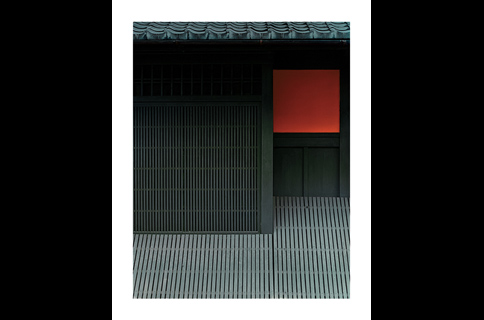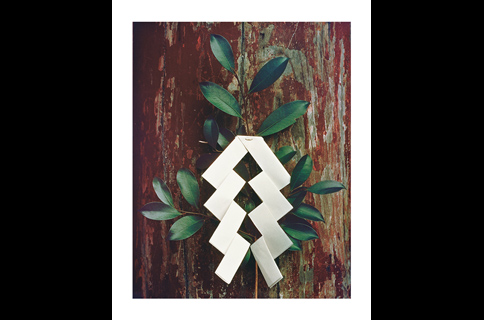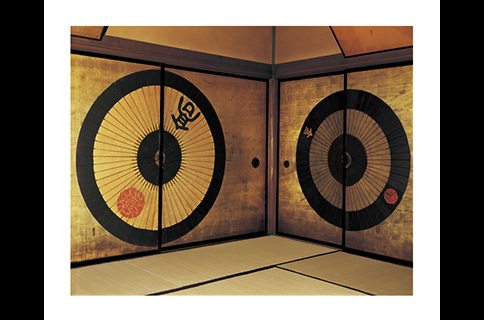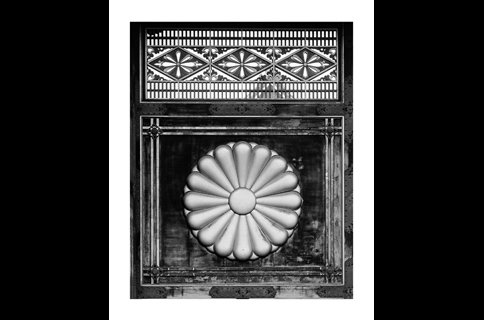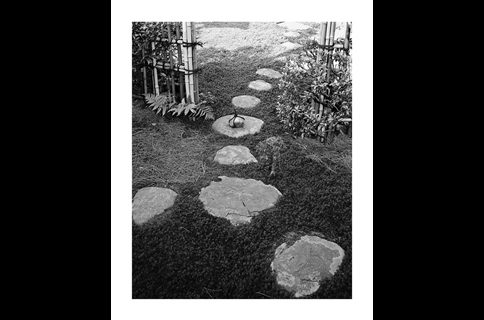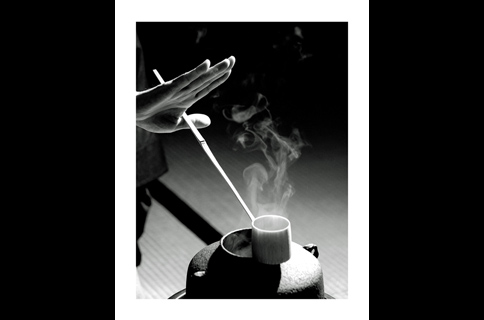- Home
- Exhibitions & Events
- The Colors and Shapes of Kyoto Takeji Iwamiya—In Pursuit of the Beauty of Japan
FUJIFILM SQUARE Photo History Museum Exhibition
The Colors and Shapes of Kyoto
Takeji Iwamiya—In Pursuit of the Beauty of Japan
The FUJIFILM SQUARE Photo History Museum is pleased to present an exhibition of works by the photographer Takeji Iwamiya on the centenary of his birth, which falls on January 4, 2020. The exhibition will run from June 9 to June 30, 2020.
A native of Yonago, Tottori prefecture, Iwamiya settled in Osaka after the war, making the city his base throughout his career as a photographer. Acclaimed as the best advertising photographer and fine art photographer in the Kansai area, Iwamiya was a prolific artist and a major influence on Daido Moriyama and others who came later. On friendly terms with Ken Domon, Tadahiko Hayashi, Shotaro Akiyama, among others, Iwamiya also cultivated exchanges with Henri Cartier-Bresson, Ernst Haas, and other photographers outside Japan. More than a photographer, Iwamiya was someone who also broadened his horizons to include calligraphy and haiku poetry.
In 1954, Iwamiya made his debut in photographic circles when he won first prize for Mannequins in the color category of the Fuji Photo Contest. Subsequently, he decided to embark on a career as a professional photographer and set up Iwamiya Photos in 1955. Finding his motifs in the history and natural environment of Japan, including Sado Island, Toshogu Shrine, Kyoto, and the Ryukyu Islands, or the daily lives of people, Iwamiya was single-mindedly focused on publishing his photographs. Bringing a sense of lyricism to his subjects, Iwamiya’s handsome compositions had a sculptural quality that inspired other photographers. He also shifted his focus to the United States before turning his attention to Europe and, finally, to the Buddhist statues of Asia.
For this exhibition, which commemorates the centenary of Iwamiya’s birth, we have handpicked twenty-eight photographs on the theme of the colors and shapes of Kyoto from the Kyoto series, Iwamiya’s masterpiece. After his first vivid encounter with Kyoto on a visit shortly after the war, Iwamiya made frequent visits to the city over a period of more than thirty years, quickly discovering the distinctive beauty of Kyoto in its scenery, the old shrines and temples, and the streets. As if exploring the essence of beauty in Japanese culture, Iwamiya methodically shot photographs of its colors and shapes—seasonal colors, colors to celebrate the arrival of each season, shapes mastered by design, shapes formed by prayer. In Iwamiya’s view, the colors and shapes that reflected the culture and wisdom cultivated in Kyoto were, pure and simple, the beauty of Japan. His visual expression represents the beauty and tradition of Japan and shows us, once again, both the unchanging beauty and the beauty that has now been lost to us.
As a photographer, Takeji Iwamiya discovered and scrutinized the colors and shapes of Kyoto. We hope you will enjoy the unwavering aesthetic sense of one whose career was spent in the pursuit of the beauty of Japan.
Profile of the photographer
Takeji Iwamiya (1920-1989)
Takeji Iwamiya was born in Yonago, Tottori prefecture, in 1920. After graduating from Tottori Prefectural Yonago Commerce and Sericultural High School (presently, Tottori Prefectural Yonago Minami Commercial High School), Iwamiya found a job at Hankyu Department Store in 1938. Subsequently, he was picked for the Nankai professional baseball team (currently, Fukuoka Softbank Hawks), but injury forced him to retire. In 1940, Iwamiya joined the Tanpei Shashin Kurabu (Tanpei Photography Club). In 1941, Iwamiya was drafted and dispatched to Manchuria. After repatriation in 1945, he became a freelance photographer in Osaka. In 1955, he set up Iwamiya Photos. While working as a Kansai-based advertising photographer, he was also focused on getting his work published. In 1966, Iwamiya was appointed head of the Photography Department at Osaka University of Arts where he worked tirelessly to train the next generation. Takeji Iwamiya died from lung cancer at age 69 in 1989. His most important publications are Katachi, Nippon no denshō I, II (KATACHI: Japanese Traditions I, II) (Bijutsu Shuppansha, 1962, The Photographic Society of Japan Annual Award), Kyo, Kyoto in KYOTO (Tanko Shinsha, 1965, The Mainichi Art Award), Kyutei no niwa I, II, III (Imperial Gardens I, II, III) (Tanko Shinsha, 1968, The Minister of Education Art Encouragement Prize), and Ajia no butsuzō (Buddhist Statues in Asia) (Shueisha, 1989, The Photographic Society of Japan Annual Award).
| Title | FUJIFILM SQUARE Photo History Museum Exhibition The Colors and Shapes of Kyoto Takeji Iwamiya—In Pursuit of the Beauty of Japan |
|---|---|
| Period |
June 9 - June 30, 2020 Open every day from 10:00 to 19:00 (closes at 16:00 on final day of exhibition; last entry ten minutes before closing) |
| Number of works | approx. 28 works |
| Venue | The Photo History Museum at FUJIFILM SQUARE (Tokyo Midtown West) |
| Admission | Free |
| Organizer | FUJIFILM Corporation |
| Special cooperation | Aya Iwamiya |
| Cooperation | Mitsumura Suiko Shoin Publishing Co., Ltd. |
| Supervisor | Etsuko Enami, Hiroki Kondo |
| Support | Minato City Board of Education |
| Planning | PhotoClassic |



